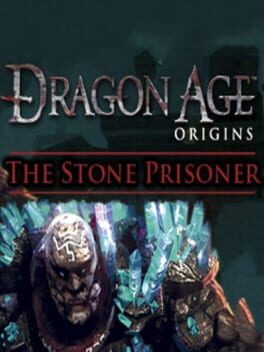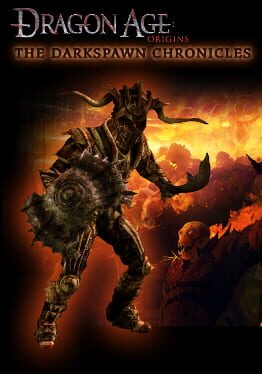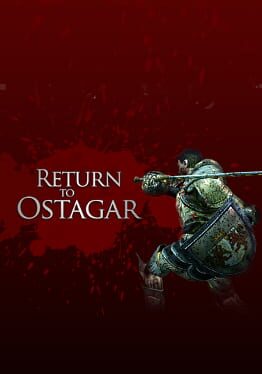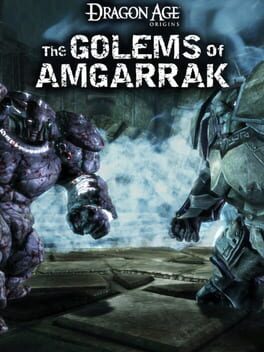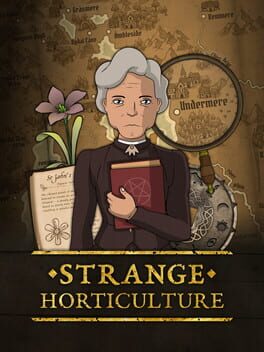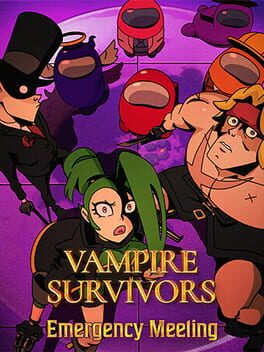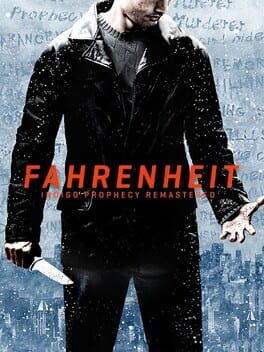Lucca202
BACKER
Warden's Keep adds a singular quest that has the Warden journey to an abandoned Grey Warden fortress and free it from demons. In it, they can potentially acquire a couple of new abilities (of variable usefulness, depending on the Warden's class) as well as the gorgeous Warden Commander armor set and some blood mage equipment. Finally, there's a chest at the keep that allows storing valuable items for later, something that was sorely missing from the base game.
It's a rather simple DLC -- it's fine if you own the Ultimate Edition, as it feels like a fun little sidequest in the middle of nowhere, but as $7 DLC, it's a bit... oof. Even worse when you think about this as a basic game feature (the party chest), as well as one of the nicer looking armor sets, being cut and sold separately.
It's a rather simple DLC -- it's fine if you own the Ultimate Edition, as it feels like a fun little sidequest in the middle of nowhere, but as $7 DLC, it's a bit... oof. Even worse when you think about this as a basic game feature (the party chest), as well as one of the nicer looking armor sets, being cut and sold separately.
Shale's DLC pack has a place in gaming history: priced at an outrageous $15 or your regional equivalent, you'd think EA was just using BioWare to gouge people, and, well, you'd be right -- that's been the case since they bought it, in fact -- but in this case, it's not for the reason one might think.
During the PS360 era, when console digital storefronts were still in their infancy and the vast majority of people still bought their games in physical media, stores like GameStop were thriving with their trade-ins and secondhand game sales. This situation led to publishers raising this huge panic around used games claiming that, since profit from the used copy went only to the store, they represented lost sales, were the same as piracy and thus, were killing the industry.
The problem, in their eyes, was the console license management model, or the lack thereof. On the PC, they could rely on serial codes and online activation (which god knows Microsoft tried to push with the XOne) to restrict the resale of games, but console users needed only to insert the disc and play. So how do you nudge users towards buying a new copy of your game instead of a used one? These publishers realized that, while you can't have a serial code for the game, what if you had to use a code for something else?
Enter the online pass, a single-use code included with new copies that enabled your account to use a title's online mode. Bought the game secondhand? Lent your copy to a friend? Lost the voucher, or didn't have one in the first place due to a packaging error? Tough luck, time to shell out for another pass. This anti-consumer practice was widely reviled, but had immense popularity for a time among publishers, who frantically searched for ways to contrive such a voucher so to drive the used copies' value down.
And contrive they did: they looked to purely single-player games, which didn't have an online mode to cut access to. In Dragon Age's case, in a display of total unscrupulousness, EA had BioWare slice away a piece of the game to sell as a $15 DLC, which you could get for free with a code included in new copies. That piece they cut out, as one might guess, is The Stone Prisoner, and that's why this DLC pack is so hard to fully enjoy. Even though I always had it for my playthroughs, it never felt like part of Origins, but instead, like a scam, a piece of the game cut out and generously returned to me.
One can even see the gashes from where they cut Shale off from the main game: the DLC begins with some random merchant showing up and conveniently giving the Grey Warden a golem control rod for no particular reason -- not even asking for a trade, or a quest, or any sort of fair exchange. What follows from there is mostly fine: The quest in Honnleath is, unusually for a DA:O DLC, interesting, and Shale is a fun character. It's true that, in an all-star cast like Origins's, I would probably rank her near the bottom, but she's nevertheless entertaining and an interesting insight into the golems and the history of the dwarves, with extra lines during the Orzammar main quest should you choose to bring her. But then again, wouldn't it have been better had she just been part of the main game, met as part of the Orzammar quest to begin with? The thought never leaves my mind.
During the PS360 era, when console digital storefronts were still in their infancy and the vast majority of people still bought their games in physical media, stores like GameStop were thriving with their trade-ins and secondhand game sales. This situation led to publishers raising this huge panic around used games claiming that, since profit from the used copy went only to the store, they represented lost sales, were the same as piracy and thus, were killing the industry.
The problem, in their eyes, was the console license management model, or the lack thereof. On the PC, they could rely on serial codes and online activation (which god knows Microsoft tried to push with the XOne) to restrict the resale of games, but console users needed only to insert the disc and play. So how do you nudge users towards buying a new copy of your game instead of a used one? These publishers realized that, while you can't have a serial code for the game, what if you had to use a code for something else?
Enter the online pass, a single-use code included with new copies that enabled your account to use a title's online mode. Bought the game secondhand? Lent your copy to a friend? Lost the voucher, or didn't have one in the first place due to a packaging error? Tough luck, time to shell out for another pass. This anti-consumer practice was widely reviled, but had immense popularity for a time among publishers, who frantically searched for ways to contrive such a voucher so to drive the used copies' value down.
And contrive they did: they looked to purely single-player games, which didn't have an online mode to cut access to. In Dragon Age's case, in a display of total unscrupulousness, EA had BioWare slice away a piece of the game to sell as a $15 DLC, which you could get for free with a code included in new copies. That piece they cut out, as one might guess, is The Stone Prisoner, and that's why this DLC pack is so hard to fully enjoy. Even though I always had it for my playthroughs, it never felt like part of Origins, but instead, like a scam, a piece of the game cut out and generously returned to me.
One can even see the gashes from where they cut Shale off from the main game: the DLC begins with some random merchant showing up and conveniently giving the Grey Warden a golem control rod for no particular reason -- not even asking for a trade, or a quest, or any sort of fair exchange. What follows from there is mostly fine: The quest in Honnleath is, unusually for a DA:O DLC, interesting, and Shale is a fun character. It's true that, in an all-star cast like Origins's, I would probably rank her near the bottom, but she's nevertheless entertaining and an interesting insight into the golems and the history of the dwarves, with extra lines during the Orzammar main quest should you choose to bring her. But then again, wouldn't it have been better had she just been part of the main game, met as part of the Orzammar quest to begin with? The thought never leaves my mind.
This review contains spoilers
Leliana's Song is meant as a retelling of Leliana's backstory, specifically the parts surrounding her betrayal by her mentor, Marjolaine. It comes off to a great start, with Leliana and her crew in Denerim at Marjolaine's service, ready to play the Orlesian game of intrigue between nobles. There's chemistry between Leliana and Marjolaine, as well as between her and her two sidekicks, and there's a bit of an open-endedness to how you can go about the objectives you're given for the night. This freedom, however, doesn't last long.
The DLC soon devolves into a lame, linear dungeon crawling romp: most of the main quest is spent going back and forth through the Arl of Denerim's estate from the main game, with fights that are either too easy or, in a couple of cases, flat out impossible without precise cheesing. There's pretty much no character progression, either: throughout the entire DLC, Leliana is a dual-wielding rogue that plays exactly like one of those would in the midgame campaign, and the starting equipment is good enough that there's little reason to be excited about whatever drops.
This would have all been fine if at least the story had been able to carry the DLC, but... okay, look, I understand the realities of game development, and how you can't exactly go creating the entirety of Val Royeaux for a piece of $7 DLC just because Leliana's story happened there: one must to find a way to use existing assets to save on cost. I also get that a bard telling a story will embellish or outright lie to make the tale more impressive -- I once listened to this dude named Varric tell this long-ass tale about a refugee and he had to repeatedly be stopped and asked to retell parts of it, but without the bullshit.
Neither of those things justifies how backwards Leliana's Song is, both as a DLC and as a retelling of Leliana's story. It doesn't reuse assets, but entire maps, and it doesn't do so cleverly: instead of making smart use of timeskips, being less specific about locations and conveniently only showing indoor or natural parts of Orlais -- which would have been indistinguishable from Ferelden maps -- it goes with a contiguous chunk of Leliana's life that is retconned to take place entirely in Ferelden, in a dizzying series of events jarringly unlike any story Leliana has ever told.
In Leliana's Song, every step of Leliana's betrayal takes place in Ferelden; she was never discovered by Orlais officials, but by some psycho in Ferelden who happened to be dating Marjolaine, and after her prison break, she sets out to have revenge on the both of them. This story is in conflict with Leliana's character from the campaign: the facts are all backwards; her worst qualities are highlighted as she is painted as ruthless and cruel, but at the same time, weak; her piety seen in the early moments of Dragon Age is absent, replaced with skepticism and lust for revenge; her resolution with Marjolaine is forced and much less impactful than the actual events in DA:O.
The excuse commonly made for it being so off is that this story is being changed on the whims of the storyteller, which sounds reasonable at first, except that that explanation contradicts Leliana's character in another way: she's the storyteller. Why does she paint herself in a much worse light in this version than she does in the one she tells the Warden? To whom is she telling a story where it makes sense to lie about the central points of the story, but say, not cover for the cleric that helps her? Why is she making her own backstory into this weird mix of romance, revenge and tragedy that is bad at all three?
Finally, I'll admit this is sort of a nitpick, but the stupid title cards. Talk about a tone-deaf way of introducing characters. They fit the opening fine by flashily introducing this band of thieves, but later usages of the device destroy the mood of the scenes they're trying to fit into. Again, nitpick, but god, does it feel like some intern directed this.
Leliana’s Song is easily the worst piece of Dragon Age: Origins DLC, a bar by no means easy to clear. It's a disappointing venture into its titular character's past, with the only conclusion that can be drawn from it being that Leliana is a terrible person and terrible storyteller. We don't take Leli slander in this house, so I think I'll just tell myself this DLC didn't exist.
The DLC soon devolves into a lame, linear dungeon crawling romp: most of the main quest is spent going back and forth through the Arl of Denerim's estate from the main game, with fights that are either too easy or, in a couple of cases, flat out impossible without precise cheesing. There's pretty much no character progression, either: throughout the entire DLC, Leliana is a dual-wielding rogue that plays exactly like one of those would in the midgame campaign, and the starting equipment is good enough that there's little reason to be excited about whatever drops.
This would have all been fine if at least the story had been able to carry the DLC, but... okay, look, I understand the realities of game development, and how you can't exactly go creating the entirety of Val Royeaux for a piece of $7 DLC just because Leliana's story happened there: one must to find a way to use existing assets to save on cost. I also get that a bard telling a story will embellish or outright lie to make the tale more impressive -- I once listened to this dude named Varric tell this long-ass tale about a refugee and he had to repeatedly be stopped and asked to retell parts of it, but without the bullshit.
Neither of those things justifies how backwards Leliana's Song is, both as a DLC and as a retelling of Leliana's story. It doesn't reuse assets, but entire maps, and it doesn't do so cleverly: instead of making smart use of timeskips, being less specific about locations and conveniently only showing indoor or natural parts of Orlais -- which would have been indistinguishable from Ferelden maps -- it goes with a contiguous chunk of Leliana's life that is retconned to take place entirely in Ferelden, in a dizzying series of events jarringly unlike any story Leliana has ever told.
In Leliana's Song, every step of Leliana's betrayal takes place in Ferelden; she was never discovered by Orlais officials, but by some psycho in Ferelden who happened to be dating Marjolaine, and after her prison break, she sets out to have revenge on the both of them. This story is in conflict with Leliana's character from the campaign: the facts are all backwards; her worst qualities are highlighted as she is painted as ruthless and cruel, but at the same time, weak; her piety seen in the early moments of Dragon Age is absent, replaced with skepticism and lust for revenge; her resolution with Marjolaine is forced and much less impactful than the actual events in DA:O.
The excuse commonly made for it being so off is that this story is being changed on the whims of the storyteller, which sounds reasonable at first, except that that explanation contradicts Leliana's character in another way: she's the storyteller. Why does she paint herself in a much worse light in this version than she does in the one she tells the Warden? To whom is she telling a story where it makes sense to lie about the central points of the story, but say, not cover for the cleric that helps her? Why is she making her own backstory into this weird mix of romance, revenge and tragedy that is bad at all three?
Finally, I'll admit this is sort of a nitpick, but the stupid title cards. Talk about a tone-deaf way of introducing characters. They fit the opening fine by flashily introducing this band of thieves, but later usages of the device destroy the mood of the scenes they're trying to fit into. Again, nitpick, but god, does it feel like some intern directed this.
Leliana’s Song is easily the worst piece of Dragon Age: Origins DLC, a bar by no means easy to clear. It's a disappointing venture into its titular character's past, with the only conclusion that can be drawn from it being that Leliana is a terrible person and terrible storyteller. We don't take Leli slander in this house, so I think I'll just tell myself this DLC didn't exist.
Darkspawn Chronicles boldly asks the question of what if the Hero of Ferelden had died during the Joining? What if Alistair had journeyed throughout Ferelden gathering allies by himself? What if you, the player, were in control not a Grey Warden, but a darkspawn commander, taking the field in the name of the Archdemon in the final fight for control of Denerim? And what if Dragon Age: Origins was actually a terrible videogame?
You take on the role of a Hurlock Vanguard, who leads the darkspawn armies into Denerim in what would be the final section of the main game's campaign. The Vanguard can enthrall others of its race to assemble a party of four, however, resurrecting allies is not possible, with the death of any thralls resulting in their permanent removal from the party and need for a subsequent replacement. Combined with a reputation system that strengthens creatures that are enthralled for longer, it's imperative that the most valuable unit types are kept alive. Boy, oh boy, does Darkspawn Chronicles make this a pain.
The usual DA:O DLC issues with reused locations and abridged quests is here, and the romp through the streets of Denerim is confusing and filled with the most random of occurrences. This time, however, there's an evident lack of planning and playtesting throughout the campaign, which along with an unhealthy dose of glitches, makes the DLC fall apart minutes after it boots up. Battles are complete chaos; quests occur haphazardly and, on the few occasions where there is a clear intended design for a scenario, it's possible and likely that the player will ignore it entirely due to their contrived design not accounting for many possibilities.
Many prominent characters from the campaign are in Denerim in the form of highly overpowered elite enemies, and they'll jump the Vanguard and its platoon at the most random of times. Far worse than the Oghren and Sten jumpscares, however, is how buggy fights usually are: multiple groups of enemies respawn infinitely, and others can even spawn from thin air, right on top of the party. In the last few sections, some groups do both. Needless to say, Nightmare runs are close to impossible without abusing just about every trick in the book, and even then, it takes some heavy turtling to get to the end of the DLC.
And then it's the final battle, and what a final battle it is. It's impossible to beat without the correct party composition since it requires more than just a beefy party. The fight is on a timer in the form of the Archdemon's health, which is being chipped away at by some very tanky units. Preserving the dragon's life requires a perfect party composition combined with a solid understanding of the game's mechanics. Even lower difficulty players often drop Darkspawn Chronicles at this point due to its perceived impossibility.
Should the player succeed, however, the intense fight gives way to a gut-wrenching ending that wraps up the DLC. It's the one shining moment in all of the DLC, but even then, the amount of hoops that must be jumped through to get to it is unacceptable. Darkspawn Chronicles, much like some of the other DA:O DLC packs, is a fascinating idea that's so underdeveloped and janky that it's easily skippable for anyone who's not among the hardest of DA:O fans.
You take on the role of a Hurlock Vanguard, who leads the darkspawn armies into Denerim in what would be the final section of the main game's campaign. The Vanguard can enthrall others of its race to assemble a party of four, however, resurrecting allies is not possible, with the death of any thralls resulting in their permanent removal from the party and need for a subsequent replacement. Combined with a reputation system that strengthens creatures that are enthralled for longer, it's imperative that the most valuable unit types are kept alive. Boy, oh boy, does Darkspawn Chronicles make this a pain.
The usual DA:O DLC issues with reused locations and abridged quests is here, and the romp through the streets of Denerim is confusing and filled with the most random of occurrences. This time, however, there's an evident lack of planning and playtesting throughout the campaign, which along with an unhealthy dose of glitches, makes the DLC fall apart minutes after it boots up. Battles are complete chaos; quests occur haphazardly and, on the few occasions where there is a clear intended design for a scenario, it's possible and likely that the player will ignore it entirely due to their contrived design not accounting for many possibilities.
Many prominent characters from the campaign are in Denerim in the form of highly overpowered elite enemies, and they'll jump the Vanguard and its platoon at the most random of times. Far worse than the Oghren and Sten jumpscares, however, is how buggy fights usually are: multiple groups of enemies respawn infinitely, and others can even spawn from thin air, right on top of the party. In the last few sections, some groups do both. Needless to say, Nightmare runs are close to impossible without abusing just about every trick in the book, and even then, it takes some heavy turtling to get to the end of the DLC.
And then it's the final battle, and what a final battle it is. It's impossible to beat without the correct party composition since it requires more than just a beefy party. The fight is on a timer in the form of the Archdemon's health, which is being chipped away at by some very tanky units. Preserving the dragon's life requires a perfect party composition combined with a solid understanding of the game's mechanics. Even lower difficulty players often drop Darkspawn Chronicles at this point due to its perceived impossibility.
Should the player succeed, however, the intense fight gives way to a gut-wrenching ending that wraps up the DLC. It's the one shining moment in all of the DLC, but even then, the amount of hoops that must be jumped through to get to it is unacceptable. Darkspawn Chronicles, much like some of the other DA:O DLC packs, is a fascinating idea that's so underdeveloped and janky that it's easily skippable for anyone who's not among the hardest of DA:O fans.
Yay for more cut content! Return to Ostagar is a DLC featuring a very short level -- the shortest of all DLC packs bar maybe The Golems of Amgarrak -- featuring important development for some of the party (provided you bring the correct people) as well as overpowered equipment that can be used to make cheese builds later on. It's...fine, and better existing as DLC than not at all, but it hits as something that should have been in the main game and serves as a perfect example of how bizarre EA's strategy with Dragon Age: Origins was.
The Golems of Amgarrak sees the Warden babysitting Rogue McDwarf, Warrior McDwarf and Relic Golem -- no, not Shale, just some golem -- on a ridiculously ill-advised expedition into an abandoned thaig in the Deep Roads, its goal being to locate experiments that attempted to recreate Caridin's work -- because that went so well last time we tried it.
If the problem with Awakening is that the things it does peter out, Golems of Amgarrak has this issue where it doesn't even get anything started in the first place. A short, handwave-y intro gives way to a standard Deep Roads romp. Less than one hour in, after one (1) puzzle that turns out to be simpler than it seems at first, the party stumbles upon the final boss. And that's it! Everyone turns around and goes back home empty-handed. Good job. Leave your PSN wallet credits at the door.
At the very least, I appreciate the challenge in that final fight after breezing through Awakening on Nightmare, but I can't give it full points because most of it stems from the dwarves having horrendous builds -- they spend more time being dead than alive over the course of the DLC -- along with the boss being able to randomly summon extremely powerful Elites to aid it. Because of that, the only way to win is to grind good RNG -- hopefully, you have some bows in your inventory and/or an OP Dex build to speed up the process.
If the problem with Awakening is that the things it does peter out, Golems of Amgarrak has this issue where it doesn't even get anything started in the first place. A short, handwave-y intro gives way to a standard Deep Roads romp. Less than one hour in, after one (1) puzzle that turns out to be simpler than it seems at first, the party stumbles upon the final boss. And that's it! Everyone turns around and goes back home empty-handed. Good job. Leave your PSN wallet credits at the door.
At the very least, I appreciate the challenge in that final fight after breezing through Awakening on Nightmare, but I can't give it full points because most of it stems from the dwarves having horrendous builds -- they spend more time being dead than alive over the course of the DLC -- along with the boss being able to randomly summon extremely powerful Elites to aid it. Because of that, the only way to win is to grind good RNG -- hopefully, you have some bows in your inventory and/or an OP Dex build to speed up the process.
"Veil Tear"? For real? BioWare, I came here to hunt a witch!
Sigh... Once again, the Warden sets out to do a thing and ends up babysitting a bunch of forgettable characters with bad builds. This time around, our party is composed of some elf, some mage and a Mabari hound, which may or may not be the same dog from the campaign. At least, this time around, their quest is something important to the Warden: finding out where Morrigan went after the defeat of the Archdemon.
It's the only reason why I'm willing to give it a pass, even though it has more or less the same issues as the rest of the DLC packs: short, buggy, does not include the original cast and is filled with busywork and poorly put together encounters. Also, the final conversation with Morrigan doesn't really provide any answers, but instead just vaguely teases events one can only hope get resolved in Inquisition.
By the Maker, it's amazing how low the bar for DLC was for Dragon Age.
Sigh... Once again, the Warden sets out to do a thing and ends up babysitting a bunch of forgettable characters with bad builds. This time around, our party is composed of some elf, some mage and a Mabari hound, which may or may not be the same dog from the campaign. At least, this time around, their quest is something important to the Warden: finding out where Morrigan went after the defeat of the Archdemon.
It's the only reason why I'm willing to give it a pass, even though it has more or less the same issues as the rest of the DLC packs: short, buggy, does not include the original cast and is filled with busywork and poorly put together encounters. Also, the final conversation with Morrigan doesn't really provide any answers, but instead just vaguely teases events one can only hope get resolved in Inquisition.
By the Maker, it's amazing how low the bar for DLC was for Dragon Age.
2022
Do you ever find yourself thinking "What if Obra Dinn and Papers, Please had a child that was really into botany?" No? Well, me neither, to be honest, but maybe we should have, as there's something good in that idea.
In an isolated corner of the town of Undermere stands a small plant shop named the Strange Horticulture. Players take on the role of the owner of that shop, a botanist who spends their days tending to their rare plants and fulfilling clients' requests -- and of course, looking out for the opportunity to acquire new plants. The twist is that no plant that comes into the shopkeeper's hands is labeled: armed with an almanac that loosely describes a variety of plants, as well as a map of the region and their own sharp observational skills, the player must cross-reference information from different sources to deduce the names of each plant.
It's like nothing I've ever seen before, and I can only describe as an inventive subversion of the detective game genre: at the shopkeeper's desk, the player will shuffle plants and papers back and forth in an attempt to adequately label each one, meeting each customer's demand. Multiple tricks are employed along the way, such as plants that have multiple names or deceitful appearances, or clients that aren't explicit about what they want, and each successful identification in face of all those hurdles feels rewarding.
There's more to Strange Horticulture than that, though: the shop will periodically receive cryptic letters and notes, and some of the clients will drop off texts that present challenging puzzles to be deciphered. Furthermore, over the course of the days in which the game takes place, a story will be revealed through the shop's customers, one that begins with a grizzly murder taking place to the north of Undermere and evolves into something ever more sinister.
During some of the in-game days, the player is invited to decide between a couple of possible solutions to the problems they are met with, which ultimately affects the conclusion of an NPC's story or the ending to the game. There's a bit of replayability in exploring those branching paths, even if one happens to get into labeling their plant collection incredibly hard and can name them by heart on a second playthrough, like some people (it's me, I'm people).
As a bonus, despite being designed around a mouse-based interface, it has well-thought out controller support and plays very well on the Steam Deck. Bottom line: Strange Horticulture was a very pleasant surprise, one that delivered from beginning to end. Maybe it won't click for everyone as it did for me, but it definitely warrants a try.
In an isolated corner of the town of Undermere stands a small plant shop named the Strange Horticulture. Players take on the role of the owner of that shop, a botanist who spends their days tending to their rare plants and fulfilling clients' requests -- and of course, looking out for the opportunity to acquire new plants. The twist is that no plant that comes into the shopkeeper's hands is labeled: armed with an almanac that loosely describes a variety of plants, as well as a map of the region and their own sharp observational skills, the player must cross-reference information from different sources to deduce the names of each plant.
It's like nothing I've ever seen before, and I can only describe as an inventive subversion of the detective game genre: at the shopkeeper's desk, the player will shuffle plants and papers back and forth in an attempt to adequately label each one, meeting each customer's demand. Multiple tricks are employed along the way, such as plants that have multiple names or deceitful appearances, or clients that aren't explicit about what they want, and each successful identification in face of all those hurdles feels rewarding.
There's more to Strange Horticulture than that, though: the shop will periodically receive cryptic letters and notes, and some of the clients will drop off texts that present challenging puzzles to be deciphered. Furthermore, over the course of the days in which the game takes place, a story will be revealed through the shop's customers, one that begins with a grizzly murder taking place to the north of Undermere and evolves into something ever more sinister.
During some of the in-game days, the player is invited to decide between a couple of possible solutions to the problems they are met with, which ultimately affects the conclusion of an NPC's story or the ending to the game. There's a bit of replayability in exploring those branching paths, even if one happens to get into labeling their plant collection incredibly hard and can name them by heart on a second playthrough, like some people (it's me, I'm people).
As a bonus, despite being designed around a mouse-based interface, it has well-thought out controller support and plays very well on the Steam Deck. Bottom line: Strange Horticulture was a very pleasant surprise, one that delivered from beginning to end. Maybe it won't click for everyone as it did for me, but it definitely warrants a try.
Emergency Meeting is the newest DLC pack for Vampire Survivors, featuring a cross-over with world-famous social deduction game Among Us. It introduces several new characters based around crewmate and impostor roles, as well as a new map and adventure.
The DLC was announced in a slick animated trailer, and while it's not bad, that trailer sets an expectation for a more charismatic experience than what we actually get. In terms of maps, there's just one somewhat dry map based around Polus for the standard mode. While the adventure features more maps and suggests a storyline, the levels it features are mostly empty and unchallenging, and the lack of character persists even in that mode.
The new characters are pretty fun, however: some are rather challenging to get going, and a few of them open the way for pretty broken builds along with the new weapons. In the end, it's two dollars for more Vampire Survivors, and that is a hard proposition to say no to.
The DLC was announced in a slick animated trailer, and while it's not bad, that trailer sets an expectation for a more charismatic experience than what we actually get. In terms of maps, there's just one somewhat dry map based around Polus for the standard mode. While the adventure features more maps and suggests a storyline, the levels it features are mostly empty and unchallenging, and the lack of character persists even in that mode.
The new characters are pretty fun, however: some are rather challenging to get going, and a few of them open the way for pretty broken builds along with the new weapons. In the end, it's two dollars for more Vampire Survivors, and that is a hard proposition to say no to.
Me: Hmm, I'm going to play this old David Cage game. Can't be that bad.
David Cage: Sex QTE
Me: what
David Cage: Push the analog stick to FUCK
The thing about playing Quantic Dream stuff in 2024 is that we know it's not going to go well. Several years ago, it was possible to have a generous interpretation of David Cage's works by assuming he was just an eccentric man who adored movies and who was trying to make this new brand of adventure games work. QD's games are different from the norm, even if their quality is inconsistent and their content, often questionable. And yes, Cage does have a history of displaying an inflated ego in public, but one could excuse that as hustle from a person who has to confidently sell unusual ideas.
Of course, since the Quantic Dream lawsuits, looking at things kindly like that has gone from hard to impossible. It now is publicly known that the company is a cesspool, that its founders are crooks ("I'm not under oath, so can I lie?" is more unforgettable than any line in a QD game) and that the auteur at the center of it all is by no means a misunderstood genius, but a bigot and a jackass. Well, alleged bigot and jackass, one might say, as many of the cases are still on-going, but the problem is, the mere knowledge of what went on during those trials informs the consumption of the works and prevents any sort of charitable interpretation.
Why am I saying all this? Because Indigo Prophecy desperately needed a charitable interpretation.
Its opening is deceptively strong: The bathroom at a diner. A man inside the stall, shaking. Possessed by a cloaked figure. He gets up, opens the stall door. An older man, washing his hands. Doesn't see the first man walk up behind him. He falls to the ground and is stabbed, again and again. The murderer raises his head, his task done, and comes to his senses. His name is Lucas Kayne, and he will need the player's help in order to flee the scene without being caught.
Lucas is not the only playable character, however, as once he is home free, we cut to detectives Carla Valenti and Tyler Miles, who arrive at the scene of the crime to investigate the gruesome murder. These scenes very quickly and effectively establish a central mystery as well as a (criminally underused) cat-and-mouse game that our protagonists are about to play. There's tension and intrigue to work with, backed by surprisingly good voice acting for a game of its time, as well as an exceptional orchestral score by the late Angelo Badalamenti of all people.
All of which is wasted by the most worthless vision, starting with the thoroughly incompetent writing. Anyone who's read reviews for Indigo Prophecy has probably heard that the game falls off during the last third, and it must be clarified that those reviewers are overselling the story: in truth, the script's quality begins to decay almost immediately after the opening, completely jumping the shark by the halfway point. The final third is simply when time and money started to run out and plot points had to be compressed, but no investors or sequels could ever have saved such drivel.
To call the writing amateurish would be hyping it up: Indigo Prophecy is what one would get if they took an 11-year-old boy, took him to watch some of IMDB's top rated films, then asked him to pen his own movie. The result would likely be a jumble of incongruent themes and lousy plot devices, much like this one: Would you like a detective story, a supernatural one, or sci-fi? How about all three? Because IP is a game about mayans, AI, interdimensional bugs, the Force, the military, Dragon Ball fighting, visions, racist stereotypes, the Illuminati, getting impregnated by the undead, alien tech, secret societies of homeless people, irradiating the undead baby with the alien tech...
And that's not even mentioning the awkward rip-offs of famous and successful films: Silence of the Lambs, The Matrix, you'll know it when you see it. However, it's the power fantasy at the core of it is the most embarassing: Lucas Kayne is our 11-year-old's OC, a mediocre man at first that becomes The Chosen One, the almighty saviour of humanity, becoming ever more powerful in a barrage of scenes of escalating absurdity. Of course, he also gets to sleep with all the women, who for some reason find him irresistible.
Carla and Tyler, on the other hand, while initially promising to replicate the buddy cop dynamic from old police movies, become almost set dressing by the halfway point. Carla, in particular, has her personality and motivations entirely wiped by the end of the story in order to achieve a conclusion that's entirely centered on Lucas. There are three endings, entirely decided by the player's performance in the last scene, but whichever one the player gets, the story ends on an egregious note of Heavy Rain-grade bullcrap, and they're not even allowed the pleasure of an ending where everyone dies.
Speaking of Heavy Rain, as painful as it is to give any kind of credit to that game, Indigo Prophecy is the predecessor and it shows. The whole QTE gameplay was still getting figured out, and most of the scenes use this Genius-style UI that has you moving the analog sticks in the directions it shows to pass each scene. That it's garish is a given, but it's the nonstop prompts having nothing to do with the action onscreen that stings. In later games, there's far less inputs to perform and they all have something to do with the action and/or motion going on in the screen, fostering some sort of connection while allowing the player to watch what's happening.
Then again, early on in IP, you do push the analog stick forward over and over to make Lucas thrust into a woman, so maybe less connection can be good in some situations. It might sound like I'm making a big deal out of this, but it goes back to the idea of interpreting things charitably. Indigo Prophecy could maybe be written off as a camp classic if some credence could be given to its creators. Instead, the sex minigame reads as childish; the numerous movie rip-offs, "Citizen Cage" posters and "New Movie" instead of "New Game" in the main menu all register as pretentious slop; and the questionable depictions of race, gender and mental illness are perceived as intentional and heartfelt.
If anything, the fact that Quantic Dream got any investors for its later games after delivering this rubbish is a sign that, at the very least, they have some fierce negotiators among them. As a consumer, however, unless you need something cheap to point at and laugh for about five hours, then walk away from with fewer brain cells than you started with, Indigo Prophecy is an easy pass.
David Cage: Sex QTE
Me: what
David Cage: Push the analog stick to FUCK
The thing about playing Quantic Dream stuff in 2024 is that we know it's not going to go well. Several years ago, it was possible to have a generous interpretation of David Cage's works by assuming he was just an eccentric man who adored movies and who was trying to make this new brand of adventure games work. QD's games are different from the norm, even if their quality is inconsistent and their content, often questionable. And yes, Cage does have a history of displaying an inflated ego in public, but one could excuse that as hustle from a person who has to confidently sell unusual ideas.
Of course, since the Quantic Dream lawsuits, looking at things kindly like that has gone from hard to impossible. It now is publicly known that the company is a cesspool, that its founders are crooks ("I'm not under oath, so can I lie?" is more unforgettable than any line in a QD game) and that the auteur at the center of it all is by no means a misunderstood genius, but a bigot and a jackass. Well, alleged bigot and jackass, one might say, as many of the cases are still on-going, but the problem is, the mere knowledge of what went on during those trials informs the consumption of the works and prevents any sort of charitable interpretation.
Why am I saying all this? Because Indigo Prophecy desperately needed a charitable interpretation.
Its opening is deceptively strong: The bathroom at a diner. A man inside the stall, shaking. Possessed by a cloaked figure. He gets up, opens the stall door. An older man, washing his hands. Doesn't see the first man walk up behind him. He falls to the ground and is stabbed, again and again. The murderer raises his head, his task done, and comes to his senses. His name is Lucas Kayne, and he will need the player's help in order to flee the scene without being caught.
Lucas is not the only playable character, however, as once he is home free, we cut to detectives Carla Valenti and Tyler Miles, who arrive at the scene of the crime to investigate the gruesome murder. These scenes very quickly and effectively establish a central mystery as well as a (criminally underused) cat-and-mouse game that our protagonists are about to play. There's tension and intrigue to work with, backed by surprisingly good voice acting for a game of its time, as well as an exceptional orchestral score by the late Angelo Badalamenti of all people.
All of which is wasted by the most worthless vision, starting with the thoroughly incompetent writing. Anyone who's read reviews for Indigo Prophecy has probably heard that the game falls off during the last third, and it must be clarified that those reviewers are overselling the story: in truth, the script's quality begins to decay almost immediately after the opening, completely jumping the shark by the halfway point. The final third is simply when time and money started to run out and plot points had to be compressed, but no investors or sequels could ever have saved such drivel.
To call the writing amateurish would be hyping it up: Indigo Prophecy is what one would get if they took an 11-year-old boy, took him to watch some of IMDB's top rated films, then asked him to pen his own movie. The result would likely be a jumble of incongruent themes and lousy plot devices, much like this one: Would you like a detective story, a supernatural one, or sci-fi? How about all three? Because IP is a game about mayans, AI, interdimensional bugs, the Force, the military, Dragon Ball fighting, visions, racist stereotypes, the Illuminati, getting impregnated by the undead, alien tech, secret societies of homeless people, irradiating the undead baby with the alien tech...
And that's not even mentioning the awkward rip-offs of famous and successful films: Silence of the Lambs, The Matrix, you'll know it when you see it. However, it's the power fantasy at the core of it is the most embarassing: Lucas Kayne is our 11-year-old's OC, a mediocre man at first that becomes The Chosen One, the almighty saviour of humanity, becoming ever more powerful in a barrage of scenes of escalating absurdity. Of course, he also gets to sleep with all the women, who for some reason find him irresistible.
Carla and Tyler, on the other hand, while initially promising to replicate the buddy cop dynamic from old police movies, become almost set dressing by the halfway point. Carla, in particular, has her personality and motivations entirely wiped by the end of the story in order to achieve a conclusion that's entirely centered on Lucas. There are three endings, entirely decided by the player's performance in the last scene, but whichever one the player gets, the story ends on an egregious note of Heavy Rain-grade bullcrap, and they're not even allowed the pleasure of an ending where everyone dies.
Speaking of Heavy Rain, as painful as it is to give any kind of credit to that game, Indigo Prophecy is the predecessor and it shows. The whole QTE gameplay was still getting figured out, and most of the scenes use this Genius-style UI that has you moving the analog sticks in the directions it shows to pass each scene. That it's garish is a given, but it's the nonstop prompts having nothing to do with the action onscreen that stings. In later games, there's far less inputs to perform and they all have something to do with the action and/or motion going on in the screen, fostering some sort of connection while allowing the player to watch what's happening.
Then again, early on in IP, you do push the analog stick forward over and over to make Lucas thrust into a woman, so maybe less connection can be good in some situations. It might sound like I'm making a big deal out of this, but it goes back to the idea of interpreting things charitably. Indigo Prophecy could maybe be written off as a camp classic if some credence could be given to its creators. Instead, the sex minigame reads as childish; the numerous movie rip-offs, "Citizen Cage" posters and "New Movie" instead of "New Game" in the main menu all register as pretentious slop; and the questionable depictions of race, gender and mental illness are perceived as intentional and heartfelt.
If anything, the fact that Quantic Dream got any investors for its later games after delivering this rubbish is a sign that, at the very least, they have some fierce negotiators among them. As a consumer, however, unless you need something cheap to point at and laugh for about five hours, then walk away from with fewer brain cells than you started with, Indigo Prophecy is an easy pass.
空気を読む (kuuki wo yomu) - Phrase meaning literally "to read the atmosphere", equivalent to English's "to read the room".
In case you were wondering, that's where the name 空気読み comes from. As far as really defining the game, however, one can't easily top DeviMetric's summarizing of the game as "social anxiety Wario Ware", which perfectly encapsulates the experience. To those who have never played Wario Ware, it is a collection of microgames in which the player is thrown into a series of situations where they have control of a person or object in a scene and must figure out, in just a few seconds, what is expected of them in that situation and how to do it.
What separates Kuukiyomi from Wario Ware, and what makes it so novel, is that its microgames revolve around social situations. Say you're on a train, sitting between two empty seats, and a couple enters the car. Armed with just directional inputs and the A and B buttons, what will you do? That might be a simple one, but as the game progresses into its many levels, more unusual situations begin to appear, and those who're not quick on their feet will end up getting lots of awkward looks.
There's just over an hour of gameplay to be had with the default game mode, then there's an alternative mode where acting socially inadequately is the objective. Finally, the game features a list of secrets that are unlocked by taking unorthodox approaches to the situations at hand. I figure most of the replayability, however, comes from having other people (preferrably that have some knowledge of Japanese culture) have a go at the campaign. Kuukiyomi has become one of my favorite party games, and watching other people struggle with it has consistently gotten laughs out of the friend groups I bring it to.
In case you were wondering, that's where the name 空気読み comes from. As far as really defining the game, however, one can't easily top DeviMetric's summarizing of the game as "social anxiety Wario Ware", which perfectly encapsulates the experience. To those who have never played Wario Ware, it is a collection of microgames in which the player is thrown into a series of situations where they have control of a person or object in a scene and must figure out, in just a few seconds, what is expected of them in that situation and how to do it.
What separates Kuukiyomi from Wario Ware, and what makes it so novel, is that its microgames revolve around social situations. Say you're on a train, sitting between two empty seats, and a couple enters the car. Armed with just directional inputs and the A and B buttons, what will you do? That might be a simple one, but as the game progresses into its many levels, more unusual situations begin to appear, and those who're not quick on their feet will end up getting lots of awkward looks.
There's just over an hour of gameplay to be had with the default game mode, then there's an alternative mode where acting socially inadequately is the objective. Finally, the game features a list of secrets that are unlocked by taking unorthodox approaches to the situations at hand. I figure most of the replayability, however, comes from having other people (preferrably that have some knowledge of Japanese culture) have a go at the campaign. Kuukiyomi has become one of my favorite party games, and watching other people struggle with it has consistently gotten laughs out of the friend groups I bring it to.
2023
The subject of liminal spaces has exploded in popularity recently, having had a loyal following before, but pushed to the spotlight by the short movie The Backrooms released a few years ago. Similarly, the spatial loop became a trend following P.T.'s ever shifting hallway. Finding itself in the intersection of those two thoroughly abused trends, it's unlikely I'd have given The Exit 8 the time of day had I not seen it in action beforehand.
As one would expect from the $4 price tag, it's a simple game, based entirely on observation: the player is in a subway station and must get from exit 0 to exit 8. To do that, they must pass through a hallway with set characteristics: a set of posters, a row of doors, signage and so on. If everything about the hallway looks right, they press on to the next exit. If there's something fishy going on, they must turn back. Failure to observe these guidelines loops them back to exit 0.
When displaying an anomaly in the station, the game picks randomly from a few dozen possible anomalies, a set which ranges from subtle shifts to surreal occurrences that are immediately noticeable. Conditioning the player into paying close attention to small details then tossing in something clearly unnatural is a highly effective way to get a jump out of them, making The Exit 8 a great horror game for people who aren't great with the horror genre.
Its biggest success, however, is in the short and dense runtime. The Exit 8 is cheaply produced, as is made evident by the use of Unreal asset packs and the appalling performance for an experience that takes place entirely in a hallway. Had the game stretched itself thin and tried to pad runtime, its weaknesses would have begun to show, however, since it makes a point of not repeating events the player has already seen, it proves an enjoyable pastime.
As one would expect from the $4 price tag, it's a simple game, based entirely on observation: the player is in a subway station and must get from exit 0 to exit 8. To do that, they must pass through a hallway with set characteristics: a set of posters, a row of doors, signage and so on. If everything about the hallway looks right, they press on to the next exit. If there's something fishy going on, they must turn back. Failure to observe these guidelines loops them back to exit 0.
When displaying an anomaly in the station, the game picks randomly from a few dozen possible anomalies, a set which ranges from subtle shifts to surreal occurrences that are immediately noticeable. Conditioning the player into paying close attention to small details then tossing in something clearly unnatural is a highly effective way to get a jump out of them, making The Exit 8 a great horror game for people who aren't great with the horror genre.
Its biggest success, however, is in the short and dense runtime. The Exit 8 is cheaply produced, as is made evident by the use of Unreal asset packs and the appalling performance for an experience that takes place entirely in a hallway. Had the game stretched itself thin and tried to pad runtime, its weaknesses would have begun to show, however, since it makes a point of not repeating events the player has already seen, it proves an enjoyable pastime.
2022
Sometimes, not knowing is best.
Who's Lila is instantly recognizable to people who have seen even a screenshot of it due to its striking, 1-bit visuals combined with its emphasis on character faces that leads it to dedicate 40% of the screen to their portraits. For a reason, too: its main mechanic, aside from the standard point-and-click adventure toolkit, has the player manipulating the protagonist's face in order to imprint upon it an emotion to be perceived by other characters in the game.
See, William has a very hard time demonstrating emotions himself, but he tries to get by in his life. It just so happens that one of his friends, Tanya Kennedy, has disappeared, and the suspicion of foul play means that Will has a long day ahead of himself, with a lot of hard questions to answer. Multiple actors are at play, from Tanya's friends seeking her out, to the police digging around, a cult, conspiracies... and there are numerous endings to William's story depending on both the player's choices over the course of the day and their performance during conversations with others.
...and it all falls flat. As much as the face manipulation makes for a fascinating visual experience with its distorted, uncanny expressions, it's utilized somewhat poorly. This being a game with multiple endings, one would expect a focus on exploring different routes stemming from different NPC reactions, but that's not quite the case. There's few scenes in the game and even fewer occasions in which the outcome of the scene branches depending on the face William puts on, and when it does, it's almost always a matter of picking one of six correct emotions and passing the scene or not, with the game sometimes inelegantly telling the player to load the autosave because they messed up and are now stuck.
Add to that the face prompts unpredictably changing the line William is about to say, the facial expressions mechanic quickly turn into a gamified routine of trial-and-error, which only adds to the already large amount of friction inherent to playing Who's Lila. While the game's indieness is, at first, endearing, it quickly becomes irritating, with bugs, crashes and softlocks being a common sight, not to mention typos. Additionally, several questionable technical and creative decisions make it even harder to focus on the game instead of on its problems.
Who's Lila uses dithered visuals to render its scenes and presents them through fixed camera angles -- two techniques that look amazing in isolation but work against one another as they are used here. Dithering removes detail from an image (see note 1), reducing its clarity, which means it works best on high resolutions, where there's a surplus of detail, or when there's enough motion that more cues (shadows, the movement of objects relative to another) will allow a viewer to make out the picture.
As for fixed camera angles, they're not just about fixing the camera in a corner, like Who's Lila mostly does, but about employing cinematography to transmit feelings and establish a flow to the player's movement. So when using static cameras, in a scene made of low quality assets, whose game view occupies just over half the game window... well, there's a key for showing overlay icons on top of interactable objects around William, and suffice to say any player who doesn't want to object-hunt for several hours will be making extensive use of it.
Furthermore, there's an ARG element to the game. At certain points, the player is led to, on a real world browser, pore over a Twitter account, as well as visit websites from in-game URLs and download and opening PDFs that contain information needed to progress through the game. In itself, this is not terrible, since one can do all this on their phone without having to tap out of the game, but does come off as cheaply made and superfluous. What makes the ARG a pain is that part of the ARG involves installing a DLC for the game, the Daemon. That's a second executable that communicates with the main game's and triggers in-game events that wouldn't happen without it on.
It's a cute idea that ends up costing many players -- especially Steam Deck users, to which, by the way, Who's Lila is marked as Steam Deck Verified -- hours of tinkering for getting the executables to actually detect each other correctly (see note 2), and then forces playing in windowed mode so one can have both windows visible at the same time. There was no reason for it to be implemented this way other than the novelty factor, as one of the endings literally tells the player to download the Daemon, even showing the Steam Store link onscreen -- a moment in which it could have been introduced as an in-game mechanic and saved unlucky people the headache.
Mind you, this is not an optional component: a handful of endings, as well as the true ending, are impossible to achieve without the Daemon up and running. This also means that introducing the Daemon later would have also made onboarding new players much easier as they would not be immediately jumped by what, as they'll find out later, are alternate routes leading to some of the story's more obscure endings.
Friction is the keyword for Who's Lila, a game filled with interesting ideas but marred by a largely flawed execution that makes the experience as a whole harder to enjoy. In a sense, it's fitting that one of the main themes of a story is the obsession with unsolved mysteries and unknown quantities: Who's Lila seemed much more interesting from the small clips lying around the internet and the general vibes it gives off. All of that said, those ideas and vibes are here, and for those who'd like to check them out, by all means, there's far worse ways to spend money on Steam than handing it to a solo indie dev somewhere. Just be prepared for plenty of jank.
Note 1: Strictly speaking, it's not dithering that's removing detail, but the posterization step that precedes it and is required to achieve the sort of visuals seen here. In older hardware, which supported displaying less colors, dithering was employed to make it look like an image had more colors than it did -- nowadays, since computers support many more colors, to achieve that sort of retro visual, one must posterize the image first, then dither.
Note 2: A while after I finished the game, LoneEmissary and nicole.ham on the Steam Forums worked out a way to fix the game on Steam Deck (and probably any Arch-based distro) without having to mess with the system on a deeper level, so if you're an unlucky person who wishes to play Who's Lila on that platform, check their posts out.
Who's Lila is instantly recognizable to people who have seen even a screenshot of it due to its striking, 1-bit visuals combined with its emphasis on character faces that leads it to dedicate 40% of the screen to their portraits. For a reason, too: its main mechanic, aside from the standard point-and-click adventure toolkit, has the player manipulating the protagonist's face in order to imprint upon it an emotion to be perceived by other characters in the game.
See, William has a very hard time demonstrating emotions himself, but he tries to get by in his life. It just so happens that one of his friends, Tanya Kennedy, has disappeared, and the suspicion of foul play means that Will has a long day ahead of himself, with a lot of hard questions to answer. Multiple actors are at play, from Tanya's friends seeking her out, to the police digging around, a cult, conspiracies... and there are numerous endings to William's story depending on both the player's choices over the course of the day and their performance during conversations with others.
...and it all falls flat. As much as the face manipulation makes for a fascinating visual experience with its distorted, uncanny expressions, it's utilized somewhat poorly. This being a game with multiple endings, one would expect a focus on exploring different routes stemming from different NPC reactions, but that's not quite the case. There's few scenes in the game and even fewer occasions in which the outcome of the scene branches depending on the face William puts on, and when it does, it's almost always a matter of picking one of six correct emotions and passing the scene or not, with the game sometimes inelegantly telling the player to load the autosave because they messed up and are now stuck.
Add to that the face prompts unpredictably changing the line William is about to say, the facial expressions mechanic quickly turn into a gamified routine of trial-and-error, which only adds to the already large amount of friction inherent to playing Who's Lila. While the game's indieness is, at first, endearing, it quickly becomes irritating, with bugs, crashes and softlocks being a common sight, not to mention typos. Additionally, several questionable technical and creative decisions make it even harder to focus on the game instead of on its problems.
Who's Lila uses dithered visuals to render its scenes and presents them through fixed camera angles -- two techniques that look amazing in isolation but work against one another as they are used here. Dithering removes detail from an image (see note 1), reducing its clarity, which means it works best on high resolutions, where there's a surplus of detail, or when there's enough motion that more cues (shadows, the movement of objects relative to another) will allow a viewer to make out the picture.
As for fixed camera angles, they're not just about fixing the camera in a corner, like Who's Lila mostly does, but about employing cinematography to transmit feelings and establish a flow to the player's movement. So when using static cameras, in a scene made of low quality assets, whose game view occupies just over half the game window... well, there's a key for showing overlay icons on top of interactable objects around William, and suffice to say any player who doesn't want to object-hunt for several hours will be making extensive use of it.
Furthermore, there's an ARG element to the game. At certain points, the player is led to, on a real world browser, pore over a Twitter account, as well as visit websites from in-game URLs and download and opening PDFs that contain information needed to progress through the game. In itself, this is not terrible, since one can do all this on their phone without having to tap out of the game, but does come off as cheaply made and superfluous. What makes the ARG a pain is that part of the ARG involves installing a DLC for the game, the Daemon. That's a second executable that communicates with the main game's and triggers in-game events that wouldn't happen without it on.
It's a cute idea that ends up costing many players -- especially Steam Deck users, to which, by the way, Who's Lila is marked as Steam Deck Verified -- hours of tinkering for getting the executables to actually detect each other correctly (see note 2), and then forces playing in windowed mode so one can have both windows visible at the same time. There was no reason for it to be implemented this way other than the novelty factor, as one of the endings literally tells the player to download the Daemon, even showing the Steam Store link onscreen -- a moment in which it could have been introduced as an in-game mechanic and saved unlucky people the headache.
Mind you, this is not an optional component: a handful of endings, as well as the true ending, are impossible to achieve without the Daemon up and running. This also means that introducing the Daemon later would have also made onboarding new players much easier as they would not be immediately jumped by what, as they'll find out later, are alternate routes leading to some of the story's more obscure endings.
Friction is the keyword for Who's Lila, a game filled with interesting ideas but marred by a largely flawed execution that makes the experience as a whole harder to enjoy. In a sense, it's fitting that one of the main themes of a story is the obsession with unsolved mysteries and unknown quantities: Who's Lila seemed much more interesting from the small clips lying around the internet and the general vibes it gives off. All of that said, those ideas and vibes are here, and for those who'd like to check them out, by all means, there's far worse ways to spend money on Steam than handing it to a solo indie dev somewhere. Just be prepared for plenty of jank.
Note 1: Strictly speaking, it's not dithering that's removing detail, but the posterization step that precedes it and is required to achieve the sort of visuals seen here. In older hardware, which supported displaying less colors, dithering was employed to make it look like an image had more colors than it did -- nowadays, since computers support many more colors, to achieve that sort of retro visual, one must posterize the image first, then dither.
Note 2: A while after I finished the game, LoneEmissary and nicole.ham on the Steam Forums worked out a way to fix the game on Steam Deck (and probably any Arch-based distro) without having to mess with the system on a deeper level, so if you're an unlucky person who wishes to play Who's Lila on that platform, check their posts out.
Coming hot on the heels of the hit 2023 horror action game "Hot Man Shoots Ganados", Capcom pushes the envelope once again with the follow-up "Hot Woman Shoots Ganados". Truly, we are living a golden age for the medium, an age of bewildering innovation.
As a GameCube owner, which, you'll remember, was the platform to which the original RE4 was exclusive, Separate Ways was always out of reach, making it impossible to judge how the remake fares in regards to recreating it. As someone who deeply enjoyed RE4 Remake, however, Separate Ways makes for the perfect excuse to pick it back up for another playthrough or three. It follows Ada Wong on her assignment to retrieve the Amber, offering another perspective on the events of the game. Ada plays much like Leon does, but has a few extra tricks up her sleeve, such as a grappling hook to close distances or get to the high ground. Thus, her DLC bears a degree of freshness for people who already know RE4 Remake like the back of their hands (it's me, I'm people).
It's also surprisingly lengthy and well-paced for what's supposed to be a side story DLC priced at $10. An absolute must have for all fans of the base game.
As a GameCube owner, which, you'll remember, was the platform to which the original RE4 was exclusive, Separate Ways was always out of reach, making it impossible to judge how the remake fares in regards to recreating it. As someone who deeply enjoyed RE4 Remake, however, Separate Ways makes for the perfect excuse to pick it back up for another playthrough or three. It follows Ada Wong on her assignment to retrieve the Amber, offering another perspective on the events of the game. Ada plays much like Leon does, but has a few extra tricks up her sleeve, such as a grappling hook to close distances or get to the high ground. Thus, her DLC bears a degree of freshness for people who already know RE4 Remake like the back of their hands (it's me, I'm people).
It's also surprisingly lengthy and well-paced for what's supposed to be a side story DLC priced at $10. An absolute must have for all fans of the base game.

